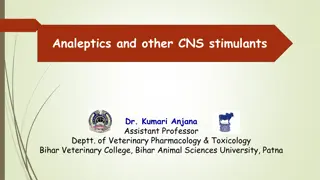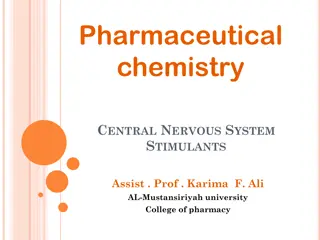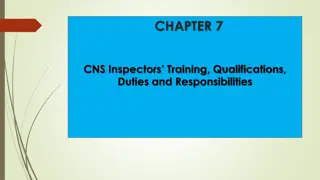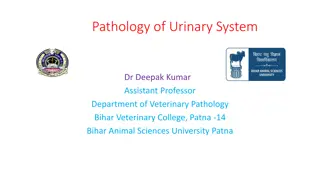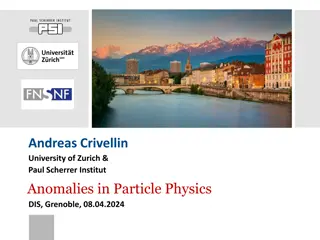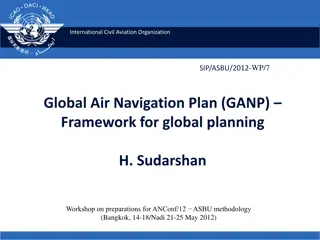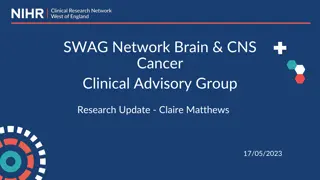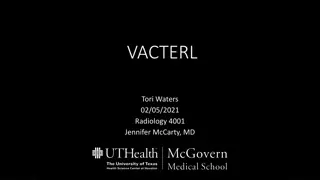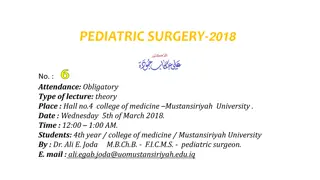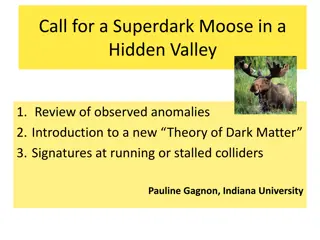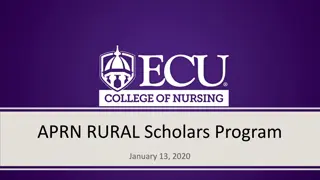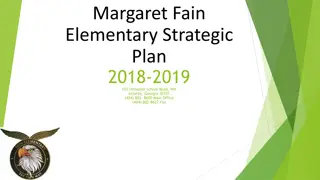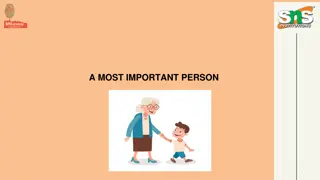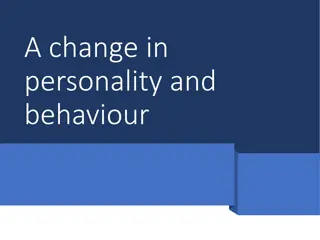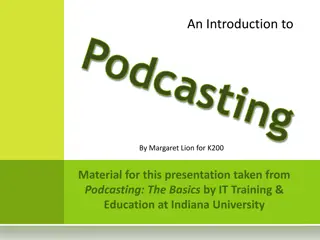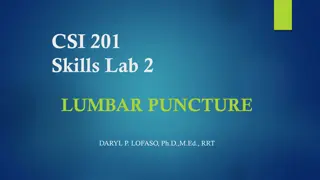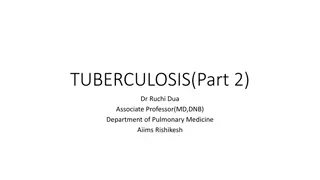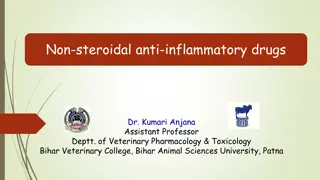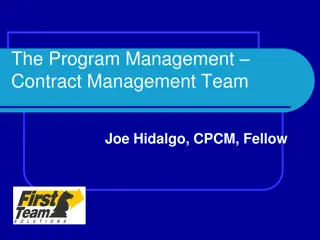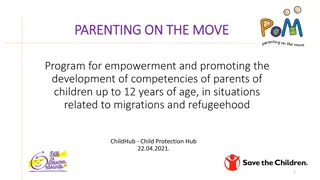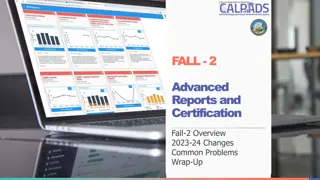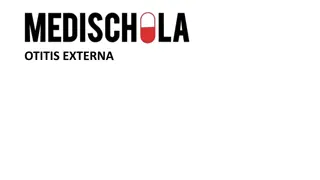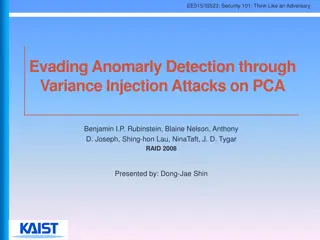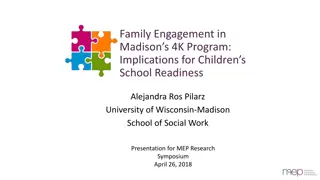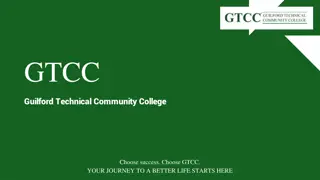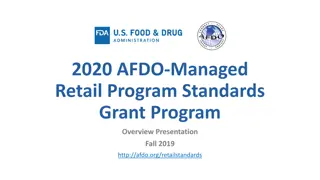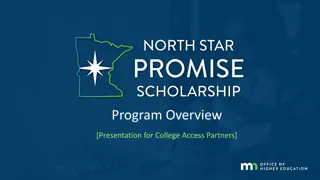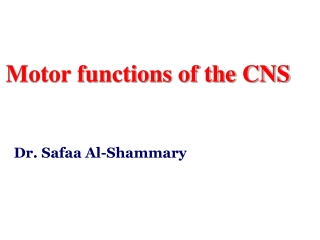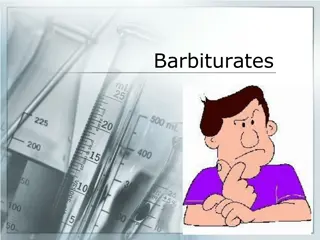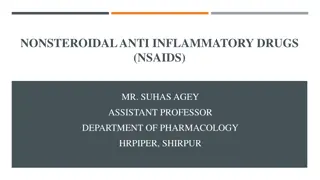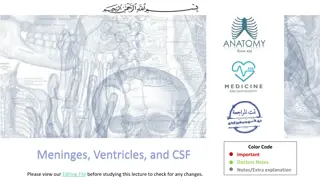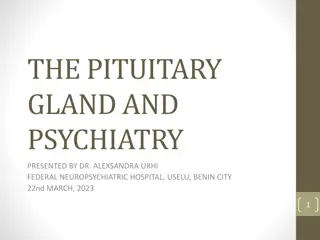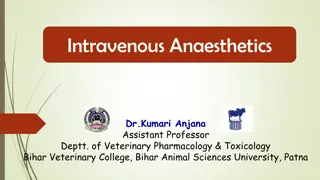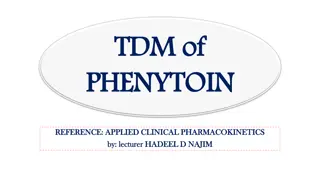Margaret Hackett Family Program Overview for CNS Anomalies
The Margaret Hackett Family Program at UChicago Medicine is dedicated to advancing care and research for patients with congenital anomalies of the central nervous system. Through pillars focused on providing compassionate care, establishing a network of experts, creating resources for navigating treatments, and driving innovative research initiatives, the program aims to enhance patient outcomes and offer critical support for children and adults seeking treatment and answers. With a mission to provide a warm and compassionate destination for patients and families, the program has already made an impact by educating patients, identifying new cases, and enabling access to essential resources and support services.
Download Presentation

Please find below an Image/Link to download the presentation.
The content on the website is provided AS IS for your information and personal use only. It may not be sold, licensed, or shared on other websites without obtaining consent from the author. Download presentation by click this link. If you encounter any issues during the download, it is possible that the publisher has removed the file from their server.
E N D
Presentation Transcript
Margaret Hackett Program Overview: Advancing Care for Congenital Anomalies of the Central Nervous System December 2021
Advancing Care for Patients with Congenital Anomalies of the Central Nervous System (CNS) The Margaret Hackett Family Program The Margaret Hackett Family Center A program at UChicago Medicine focused on enhancing patient care and advancing leading-edge research to improve outcomes. A private philanthropic organization dedicated to raising funds for patient care and research. Educates donors about efforts to enhance care for CNS anomalies. Supports research and care initiatives at UChicago Medicine and collaborating institutions. Builds on UChicago Medicine s extensive expertise in CNS anomalies Established with philanthropic support from the Margaret Hackett Family Center. 2
Mission Statement The Mission of the Margaret Hackett Family Program (MHFP) for Congenital Anomalies of the Central Nervous System (CNS) Pillar I: Provide a warm and compassionate destination for the many children and adults who are seeking answers to their questions and are in need of treatments. Pillar II: Establish and lead a network of medical experts who are committed to the care of children and adults with congenital anomalies of the central nervous system. Pillar III: Create and maintain knowledge and resources for those navigating and treating central nervous system congenital anomalies. Pillar IV: Advance innovative research initiatives exploring the circumstances and developmental mechanisms, impact, and options for improved patient care and outcomes. 3
Pillar I: Provide a Destination for Patients and Families Provide a warm and compassionate destination for the many children and adults who are seeking answers to their questions and are in need of treatments
Pillar I: Provide a Destination for Patients and Families Patients Served: 50 unique patients since November 2020 Specialized Services: Connect patient to providers Distribute CNS educational resources Refer to advocacy organizations Follow-up with Child Life services General Services: Clinic consultations, evaluations, and surgery Yearly exam follow-up Overall Impact Patients are better educated on conditions 48 new potential patients have been identified Patients gain access to advocacy groups, resources, adaptive sports programming, financial help, etc. New collaboration with the Chicagoland Children s Health Alliance will increase the pool of potential patients served by the MHFP Children and families learn to self-advocate with support from the UChicago Medicine Child Life program. 5
Pillar I: Successes Identified internal patient referral processes to improve patient tracking Internal referrals from neonatal and fetal-maternal health service, level lll NICU, and high risk and congenital fetal maternal health center Educated 394 nurses and nurse educators in the Chicago Public School system about CNS anomalies Provided educational content to nurses Offered MHFP resources to students with CNS anomalies Connected CPS nurses with MHFP nursing staff for consultation on 504/IEP plans MHFP brochures and folders reached 25 schools and 50 people in the clinic Yearly goal to reach 40 additional schools Developed a series of brochures/guides related to general neurosurgery and distributed 33 guides to patients in clinic 6
Pillar I: Successes (continued) New MHFP virtual outreach event to educate and include primary care physicians and pediatricians Goals: Increase outreach for new patients Partner with primary care physicians and pediatricians on CNS congenital anomaly patient needs and available resources (clinical and non-clinical) 7
Pillar II: Establish a Network of Medical Experts Establish and lead a network of medical experts who are committed to the care of children and adults with congenital anomalies of the central nervous system
Our Consortium Members Bringing together national experts in CNS congenital anomalies David Frim, MD, PhD Neurosurgeon Program Director, MHFP University of Chicago Medicine Chicago, IL Moise Danielpour, MD Neurosurgeon Chair, MHFP Consortium Cedars-Sinai Medical Center Los Angeles, CA Lissa Baird, MD Neurosurgeon Boston Children s Hospital Boston, MA David F. Bauer, MD, MPH Neurosurgeon Texas Children s Hospital Houston, TX Christina Sayama, MD Neurosurgeon Oregon Health & Science University Portland, OR 9
Consortium Work MHFP team organized a Clinical Data Gathering Consortium that meets twice per month. Activities: Direct research activities that currently focus on Hydrocephalus, Chiari Malformation, Spina bifida, and Achondroplasia Review and discuss unique patient cases within their purview Oversee construction of CNS congenital anomaly patient database Identify new research opportunities Accomplishments: Continued to expand national research collaboration by recruiting a new consortium member (Texas Children's Hospital). MHFP Consultations MHFP Consortium members track unique patient cases discussed in consortium meetings Patients will be able to directly request a consultation or appointment from any MHFP Consortium member 10
Pillar III: Create and Maintain a Clinical Database Create and maintain a clinical database of knowledge regarding central nervous system congenital anomalies
Clinical Research Database Build a comprehensive, multi-institutional patient cases database for the study of CNS congenital anomalies. Consortium members are contributing patient diagnosis and treatment records Researchers within the consortium and at other institutions will use the database to advance their investigations Accomplishments include: Creation of the clinical research database, including approvals, infrastructure, and content 1,933 surgical cases originally identified as potential records for database 605 of those records are CNS congenital anomaly patients that are eligible for entry Hydrocephalus and achondroplasia patient records uploaded 2 studies in progress from patient records that have been uploaded and completed 12
Pillar IV: Advance Innovative Research Advance innovative research initiatives exploring the circumstances and developmental mechanisms, impact, and options for improved patient care and outcomes
Areas of Focus Researchers will use the database to study the following conditions: Chiari malformation Hydrocephalus Spina Bifida Achondroplasia *As the studies progress, other conditions will be added to the research. 14
Current Research Hydrocephalus Study Aim: Evaluate if foramen magnum shunt can be successful in hydrocephalus patients who have failed multiple other shunt designs. Researcher: David Frim, MD, PhD, University of Chicago Study of Speech Impairment in Patients with Chiari Malformation 1 (CM1) Aims: 1) Determine whether pre-surgical CM1 brain morphometrics differ between those with and without speech impairment. 2) Determine changes in post-surgical CM1 brain morphometrics for those with improvement in speech impairment. Researchers: David Frim, MD, PhD, UChicago Medicine; Francis Loth, PhD, University of Akron 15
Current Research (continued) True Fisp MRI Study on Hydrocephalus with Aqueductal Stenosis Aim: Determine and compare how pre- and post-operative imaging correlate in pediatric patients who underwent successful or failed endoscopic third ventriculostomy in the setting of hydrocephalus with aqueductal stenosis. Researcher: Moise Danielpour, MD, Cedars-Sinai Intracranial Compliance Change Study Aims: 1.) Determine the behavior of the brain tissue under cerebrospinal fluid overpressure in management of pediatric hydrocephalus. 2.) Reduce shunt failures. Researchers: Postdoctoral fellow Seif Gholampour, PhD, with oversight by David Frim, MD, PhD, UChicago Medicine Interaction between Blood, Brain, and CSF Aim: Understand the mechanism of the interaction of blood and CSF and the role of the brain tissue. Researchers: Seif Gholampour with oversight by David Frim, MD, PhD, UChicago Medicine 16
Research Papers Forthcoming Thermal and Physical Damage in Skull Base Drilling Using Gas Cooling Mode: FEM Simulation and Experimental Evaluation (In review: Computer Methods and Programs in Biomedicine) Influence of Operating Parameters on Improving Performance of Skull Base Grinding (In progress) Speech Impairment in Patients with Symptomatic Chiari Malformation Type 1 (In review: Pediatric Neurosurgery) Pediatric and Adult Chiari Syndrome: One Disease or Two? (In progress) Shunting the Unshuntable : Results from multiple strategic attempts at CSF Shunting in Complex Failed-Shunt Patients (In progress) 17
Impact for Patients and Families With help from philanthropic partners like you, the Margaret Hackett Family Program is: Providing care, education, and resources to individuals and families impacted by CNS anomalies Bringing expert physicians and scientists together to share insights and collaborate on efforts to improve patient care Building research infrastructure to facilitate multi-institutional studies and support leading-edge investigations that will improve treatment for patients with CNS congenital anomalies Driving innovative research to deliver life-changing medical advances 18
Thank You Thank you so much for your support of the Margaret Hackett Family Program at the University of Chicago Medicine and the Margaret Hackett Family Center. With your partnership, we can continue to advance vital research and patient care initiatives and improve the lives of individuals and families impacted by CNS anomalies. We appreciate your generous contributions to help ensure this meaningful work is sustained and expanded to meet the needs of all those like Margaret. 19


